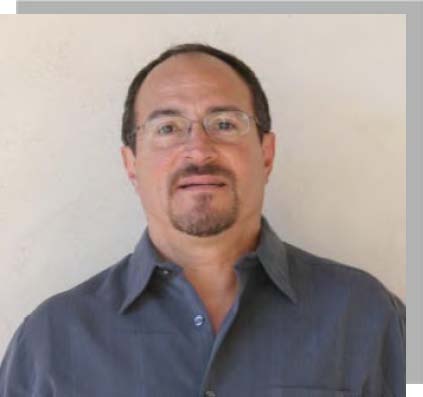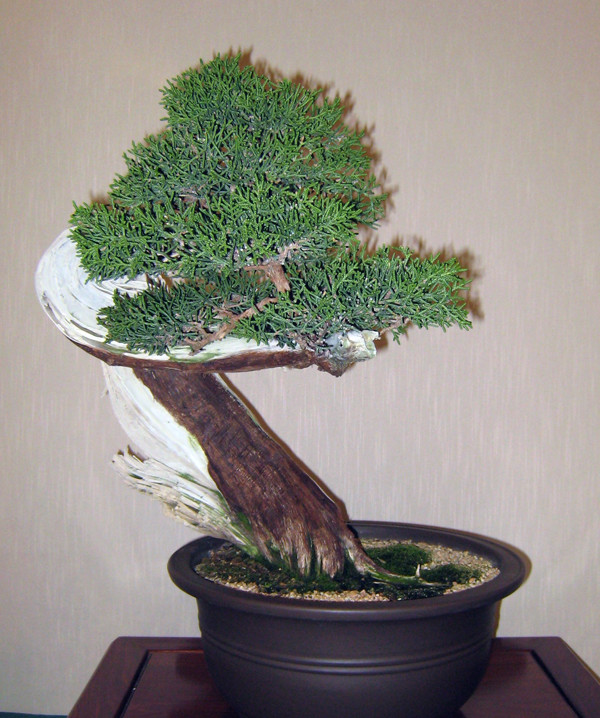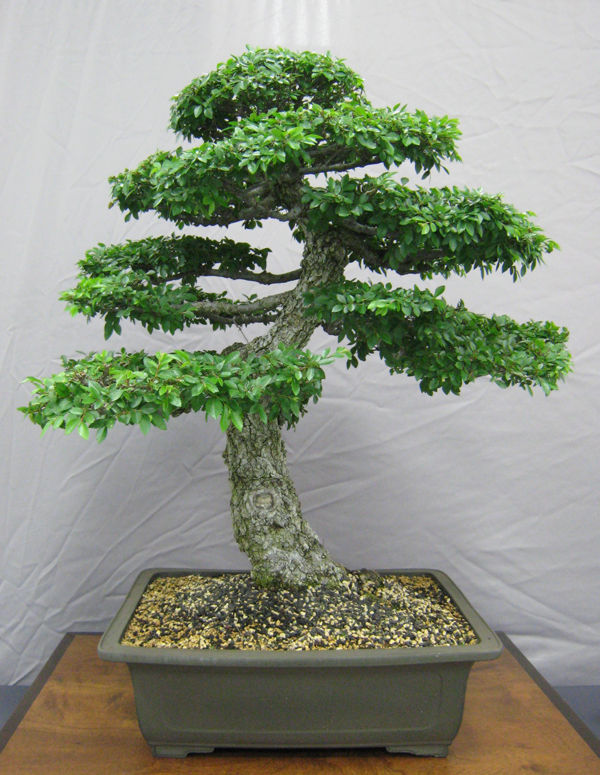January 2009 Newsletter
President’s Message
Potlucks, Scholarships, and Spring Growth
By Ken Fuentes
|
Our holiday potluck on December 18 was fantastic. We had a nice turnout and an absolutely delicious dinner. Thanks to all that participated in the auction and the raffle; I assure you that the funds raised will be put to good use.
One of the uses this year will be to support the Golden State Bonsai Federation’s “Power of One” program. This program encourages local bonsai clubs to underwrite a full-registration scholarship to GSBF’s annual convention. Clubs are free to set their own criteria for selecting someone for this scholarship, although GSBF suggests it might best be for someone who either has never gone before or is unlikely to go otherwise.
I encourage everyone—but especially those who have not ever gone to one of these terrific conventions—to consider going this year and applying for our club’s Power of One scholarship. This year’s convention will be in Riverside, November 5 – 8, and includes a suiseki program as well as the traditional bonsai program. It’s a substantial commitment of time and money, so please block out the dates on your calendar.
Of course, the raffles and auctions are just one source of funds for our club. The other main one is your annual club dues. These help us pay for professional bonsai practitioners, such as Ted Matson, Kathy Benson, and David and June Nguy, who are lined up for the first half of 2009 (see our first-half schedule). So please pay your 2009 dues promptly.
January’s meeting is a “Bring in your trees” workshop. This is a perfect time to plan a tree to take advantage of the coming spring growth spurt
Editors Note
A New Newsletter Look for 2009
By David E. Whiteside
Welcome to the 2009 version of your club newsletter. I hope you will find that most of the useful features with which you have become familiar over the past 12 months are still here, but in a more readable and user-friendly format.
As many of you may know, we came within a hair of winning the Golden State Bonsai Federation’s 2008 Newsletter Competition. Some of the things that the judges liked were our inclusion of many photographs, detailed discussions of demonstrations, full identification of trees, and extensive listings of bonsai events throughout the state and sometimes beyond. So look for even more of these features in 2009.
I’ve also changed computer programs to make the newsletter easier to produce.
I hope you like the new look. Your comments and suggestions would be most welcome – let me know what you think.
GSBF Bonsai Garden at Lake Merritt
Another Eyeful of Bonsai Beauty
By David E. Whiteside
|
In the December 2008 issue, we ran a few photographs from the Golden State Bonsai Federation’s Bonsai Collection at Lake Merritt in Oakland’s Lakeside Park (formerly known as the GSBF’s Collection North). I visited the collection just before the fall 2008 GSBF Convention in Modesto. Fundraisers to support both this collection and GSBF’s other collection, at the Huntington Library, Art Collections, and Botanical Gardens in San Marino, are scheduled for late February—see pages 4 and 8 for details.
Here and on page 5 are more photographs from the collection at Lake Merritt. Members at our holiday potluck dinner saw an abbreviated “Beta” sample of the 2009 newsletter and a shorter version of this article.
In all cases, the tree descriptions are cited from an information sheet/self-guided tour provided by the docents at Lake Merritt. As happens very often in gardening and bonsai circles, the scientific nomenclature does not always conform with standard scientific horticultural terminology, but in deference to the docents I have used their version. I took the photographs.
|
|
|
||||||
|
|
|||||

Barrett’s Bonsai Tips
Get Ready – It’s Prime Potting Time Ahead
By Jim Barrett
|
Most hardy evergreen bonsai such as Japanese black pine and junipers may be repotted at this time. Wait until next month to pot for the first time. (Nursery can to bonsai pot.)
Now is the time to clean and groom most bonsai. Black pine needles that are discolored because of age or disease may be removed. Leave more needles on weak and low branch terminals, fewer on middle branches, and fewer yet on upper growth. How many you leave depends on the age and health of the tree. All terminal buds should be fat, healthy and beginning to grow this month.
Slow release fertilizers such as one of the Osmocote formulas, bone meal, blood meal, cottonseed meal, or any of the rapeseed pellets may be applied now. It takes a while for the organic fertilizers to break down and become available to the plant. Wait another month or so before you use liquid chemical fertilizers.
Blooming bonsai, such as ume, apple, plum and wisteria can be moved to show pots at this time, providing they are already in bonsai pots.
Prune all deciduous trees, removing heavy overgrown branches and twigs—especially in the upper areas of the tree. Upper story branches tend to grow unnoticed during the year and now is a good time to trim or remove them.
If you are into making cuttings, these older branches that are removed may take root. I use a rooting medium of 80% perlite (sponge rock) and 20% peat moss. Drench the rooting medium with a good fungicide such as benomyl.
Deciduous tree branches are fairly flexible now and can be wired. If you are using copper wire, make sure it has been annealed. Think about paper wrapping heavier wires before applying them to Japanese maple and other tender bark trees.
When you are finished cleaning and pruning your trees, spray them with a good dormant oil spray such as Ortho’s volck oil. You may want to combine it with Ortho’s lime sulfur dormant spray. One is for bugs; the other is basically a fungicide. Follow directions on the labels and cover your soil and pot with plastic or a towel. Lime sulfur will stain the pot if not washed off.
We are coming into prime potting and repotting time. From now until April, try to get all of your trees that need it repotted. If you need pots ask around, supply seems good for both used and new ones. If you haven’t done so, get your soil mix prepared and stored. I use a trash can with a tight lid.
GSBF Bonsai-A-Thon XIII
Fundraiser Volunteers Needed for the GSBF Bonsai Collection at the Huntington
By David E. Whiteside
The 13th Annual Bonsai-A-Thon will be held February 28 – March 1 at the Huntington Library, Art Collections, and Botanical Gardens in San Marino. All proceeds from the fundraiser go to support the Golden State Bonsai Federation’s Bonsai Collection at the Huntington. (A similar effort to support GSBF’s other bonsai collection, at Merritt Lake in Oakland, also takes place this weekend.) Admission to the Bonsai-A-Thon is free. (If you choose to visit the Huntington separately from the Bonsai-A-Thon’s planned tours, there is an admission charge to the Huntington.)
The Federation relies on its local member clubs to provide the volunteers necessary to run this big, two-day event, and Marj Branson is in charge of recruiting volunteers from our club. Please see her at the January meeting or contact her by e-mail (secretary.treasurer@cvbs-bonsai.org).
The Bonsai-A-Thon runs from 7:30 AM – 4:30 PM each day. Early bird registration is from 7:30 AM – 9:30 AM, and includes a free pass to all of the Huntington Gardens. There will be a tour of the new bonsai court that is opening the weekend of the Bonsai-A-Thon (which in past years has included tours of the Chinese and Japanese gardens) from 10:00 AM – 11:30 AM each day. There will be free demonstrations both days. On Saturday, the San Diego Bonsai Club will provide round-robin demonstrations; on Sunday, there will be concurrent demonstrations by Kathy Benson, Mel Ikeda, Ben Oki, Cesareo Perez, and Dennie Roche. Demonstration trees—plus donated trees—will be auctioned and raffled off from 3:00 PM – 4:30 PM each day. The Bonsai-A-Thon’s Bazaar (filled with vendors offering all kinds of bonsai-related products) and Bonsai Exhibit are open from 8:00 AM – 4:30 PM, and lunch is available from 11:30 AM – 1:30 PM daily.
GSBF Golden Statements
Conejo Valley Show Gets Coveage
By David E. Whiteside
The March/April 2009 issue of the Golden State Bonsai Federation magazine, Golden Statements, will include a photographic page from our own 5th Annual Bonsai Exhibition at Gardens of the World October 4 – 5, 2008. You can see a proof of how that page will look.

Because GSBF is a federation of clubs (Conejo Valley Bonsai Society is a member club), its magazine circulates automatically to each club—CVBS members always can take a look at the issues Marj Branson keeps in our library. But Golden Statements also circulates to individuals. For example, everyone who attends the Federation’s annual convention as a full registrant currently receives an annual subscription as part of the registration fee. Due to the high cost of printing and mailing the magazine, however, GSBF may change this policy by charging an additional fee for the subscription.
Even if you don’t attend the convention—or go as less than a full registrant—you also can get Golden Statements. In fact, the magazine and the Federation would appreciate additional subscriptions to help support the cost of publication. Although the magazine is now available online (in a PDF format, much as this newsletter is distributed), many readers prefer the printed product. When you see how good our show trees appear in the printed issue this spring, I think many of you will join their ranks. I get Golden Statements at home; you might want to try it, too. See the subscription form below. Meanwhile, enjoy the photographs of our show!












